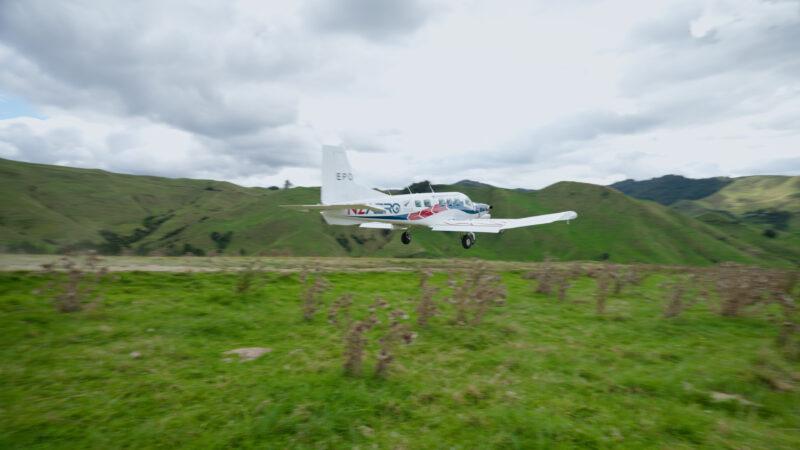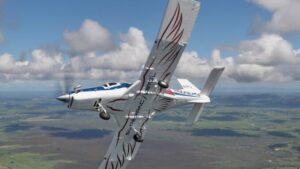Kiwi aeronautical firm Inks multi-million dollar export deal with Royal Thai Air Force
New Zealand’s aeronautical sector is set for a multi-million dollar export boost following the signing of an agreement to supply Thai Aviation Industries Co., Ltd (TAI) who provide aircraft maintenance for the Royal Thai Air Force.
A new Memorandum of Understanding (MOU) signed between Thai Aviation Industries Co., Ltd (TAI), a leading maintenance, repair, and operations organisation (MRO) in Thailand and, NZAero, New Zealand’s only commercial aircraft manufacturer, will provide for the exclusive supply of parts as well as collaborating to expand TAI’s MRO capability for the service and repair of Government aircraft in Thailand.
The agreement was signed during a seven-day mission led by Rt Hon Prime Minister Christopher Luxon with an accompanying business delegation to Singapore, Thailand and the Philippines.
The diplomatic visit is designed to strengthen bilateral ties in the region, diversify trade and promote New Zealand’s strong expertise and innovation across key sectors including manufacturing and technology.
Prime Minister, Christopher Luxon, said: “New Zealand has a serious ambition to lift our relationships with this region in ways that deliver real benefits and that advance our shared security and economic interests.
The MOU signed by NZAero in Thailand is a great outcome on all fronts and I would like to congratulate NZAero on its success in South East Asia.”
Stephen Burrows, CEO of NZAero, says Thailand’s government has launched plans to create a world-class aviation hub for the Asia-Pacific region.
He says Thailand has the second-largest economy in ASEAN and an annual defence budget of over $10bn.
“The new multi-year agreement signed between Thai Aviation Industries Co., Ltd and NZAero is set to triple the value of parts and maintenance exports to that market and help strengthen our relationship so that as their existing fleets are phased out, our new utility aircraft are seen as a viable replacement.
“The deal will see NZAero supply a range of over 800 parts for Thailand’s CT4 Airtrainer fleet, for use in military training operations.
“Other Kiwi aviation repair firms will also benefit from regular maintenance contracts to overhaul engines. A single-engine could cost up to $100,000 to overhaul and Thailand has two dozen of these aircraft in use,” he says.
Burrows says while NZ has a 50-year history as an aviation supplier to Thailand – with their air force having purchased 72 New Zealand-made aircraft and millions of dollars of parts, this is the first time an exclusive parts and service agreement has been formalised in this way.
He says the opportunity to grow the existing supply relationship between New Zealand and Thailand will represent a multi-million dollar boost to the sector’s export earnings and could see the creation of dozens more jobs and significant expansion of the local industry.
“Thailand’s investment in their aviation industry is expected to be significant over the short term. The country is committed to defence force modernisation and allocates around $1.8bn to its air force each year – presenting a significant opportunity for New Zealand to expand its share of a rapidly growing market.
“In addition, the Thai government wants its commercial aviation sector to become a key regional hub within the next five years and has ambitious plans to transform its major airports in Bangkok and Phuket. We anticipate other opportunities for New Zealand to support this aspiration as their industry grows,” he says.
Burrows says defence spending in Southeast Asia is expected to rise by billions of dollars in the coming years and New Zealand-designed aeronautical technology has a growing role to play in supporting the military-led humanitarian needs of its regional partners – as well as helping to address the impact of climate change.
“In countries like Thailand where the heat index can reach as high as 54°C, precipitation is becoming less frequent and droughts are more prevalent and intense, air quality and climate change are the nation’s leading environmental concerns.
“At the start of every year Thailand’s Department of Royal Rainmaking and Agricultural Aviation initiates a cloud-seeding programme to stimulate artificial rain and dampen down fine particulates in the air caused by vehicle emissions and agricultural practices, as well as mitigating dry weather conditions in the main crop-growing areas.
“This operation utilises a fleet of 30 rainmaking aircraft to ease the impact of climate change on the country’s farming sector and prevent hailstorms and forest fires in some regions of the country.
“We have recently launched our new SuperPac XSTOL (Extremely Short Take-Off and Landing) aircraft. With a 41% greater climb performance and 10% faster cruise speed than its predecessor, this model is specifically designed for high altitudes in hot and humid climates – allowing them to fly a 2,000kg payload over mountains at 4,000m, without impacting fuel efficiency.
“We would be able to migrate them from their current labour-intensive process where dry ice/salt are manually fed from sacks through a hole in an aircraft, to our new model which holds material in a dust-free hopper that can be released electronically using GPS or using pilot controls,” he says.
Burrows says the SuperPac provides an off-the-shelf model that can be rapidly reconfigured for humanitarian and defence roles including medivac, border patrol, aerial photography, Intelligence Search and Rescue, skydive deployment, rainmaking, pollution control, firefighting as well as passenger/freight, agricultural operations and geophysical survey.
“They could reduce their fleet size by about 50% with each SuperPac being capable of delivering twice the payload of their current aircraft and convert the aircraft from rain making to pollution control or even firefighting – within half an hour.
“We are also looking at customising rainmaking technology for this market using an aircraft-mounted flare able to be deployed from the back of the plane into the atmosphere, during droughts or periods of intense air pollution,” he says.
Burrows says they will also look to meet with defence force decision-makers and private aviation operators in Singapore and the Philippines.
“The Philippines is set to increase their annual defence budget by over 50% to modernise their military in the next five years, similarly Singapore’s increase in defence spending in the coming year will be highest in over a quarter of a century.
“The mission’s timing to these countries aligned with New Zealand export objectives and provided a tangible opportunity to grow our aeronautical manufacturing capacity,” he says.



